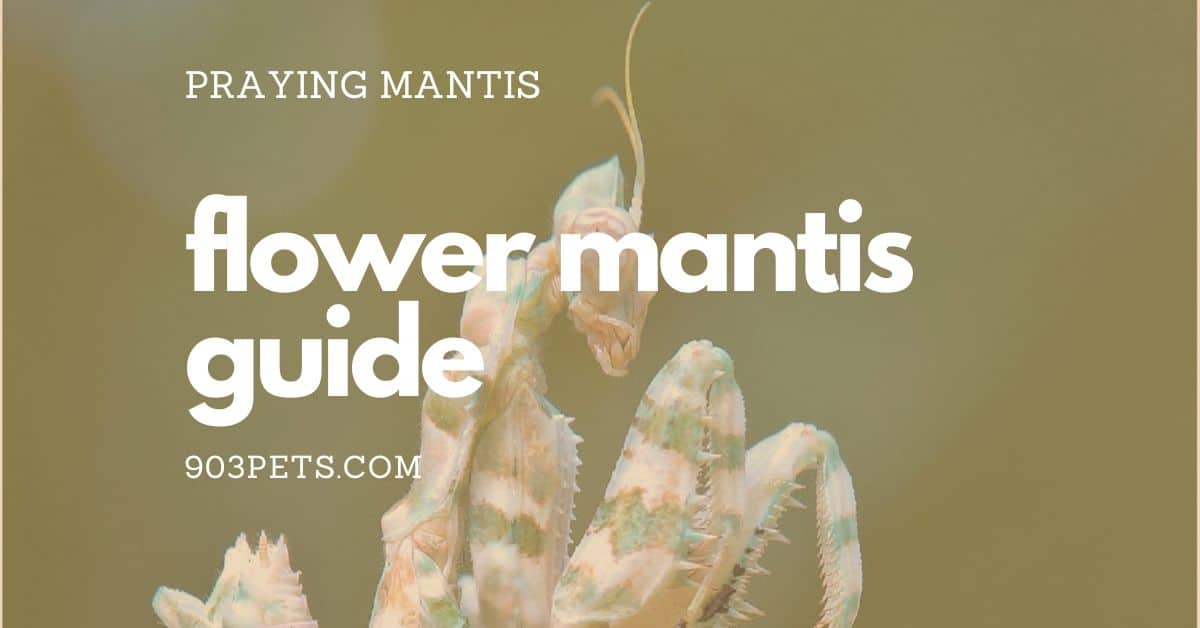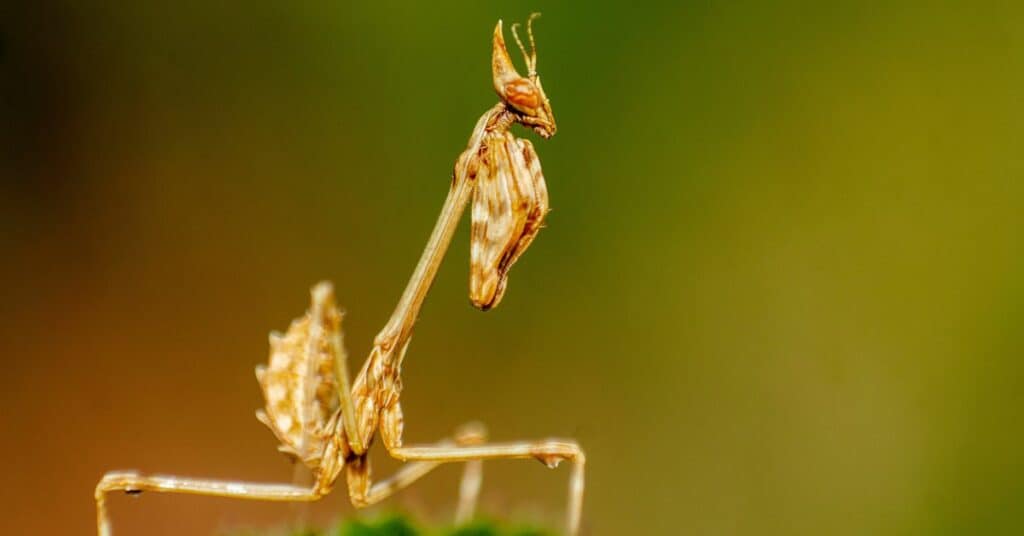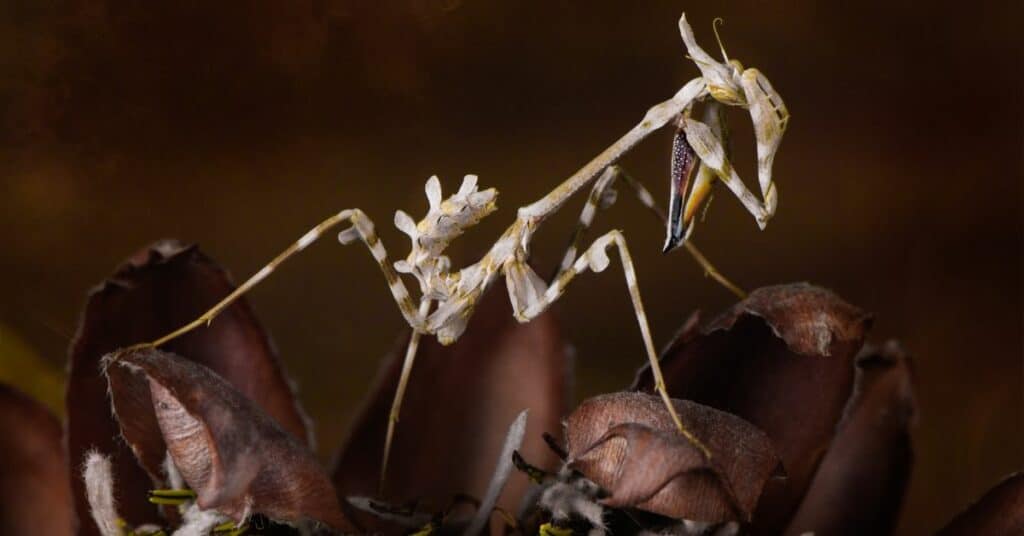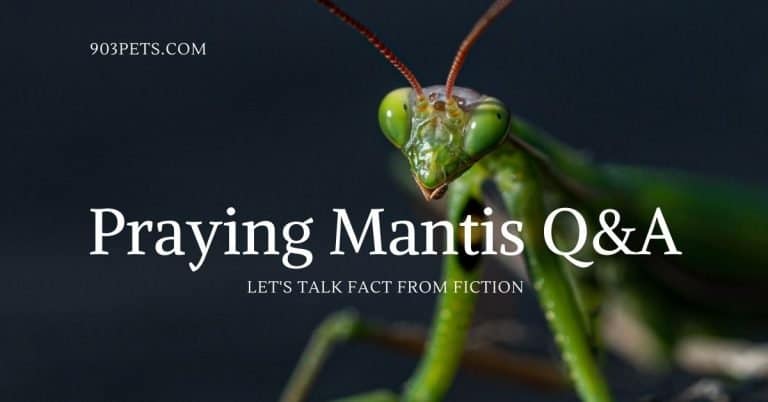Flower Mantis Guide – All You Need To Know
Flower mantises are one of the most beautiful and intriguing insects in the world. With their delicate features and colorful wings, they’re a sight to behold. But these creatures are more than just pretty faces; they’re also fierce predators. In this guide, we’ll cover everything you need to know about flower mantises, from their native habitat and diet to how to attract them to your garden.
What is a Flower Mantis
Native Habitat and Appearance
The Flower Mantis is a beautiful and intriguing creature that is native to tropical areas of Asia. They are often found in gardens, meadows, and forests where they can camouflage themselves among the flowers.
Mantises are carnivorous insects that typically have large, triangular heads with long necks. Their bodies are usually green or brown and may be patterned or brightly colored. Some mantises even have wings that mimic the appearance of leaves. The female flower mantis is usually larger than the male and can grow up to 7 cm in length.

Diet and Life Cycle
The diet of a flower mantis consists mostly of other insects which they capture with their powerful front legs. They use their camouflage to ambush their prey before striking with lightning speed.
The life cycle of a flower mantis begins when the egg hatches into a nymph. Nymphs look like miniature adults but do not have fully developed wings. They will undergo several molts as they grow larger until they reach adulthood after about 4-6 weeks. Adult mantises can live for 6-8 months but males generally die soon after mating.
Why Are They Called Flower Mantises
Their Remarkable Camouflage
Flower mantises are called such because of their incredible camouflage abilities. Their bodies are designed to look like leaves or flowers, and they often perch on plants waiting to ambush their prey. This camouflage is so effective that the mantis can even fool pollinators like bees and butterflies, which it will then eat.
Their Unusual Mating Habits
Another reason flower mantises are called such is because of their unusual mating habits. The male mantis will often present the female with a gift, such as a dead insect, before attempting to mate. If the female accepts the gift, she will allow the male to mount her and mate. However, if she rejects the gift, she may kill and eat the male instead!
How to Attract Flower Mantises to Your Garden.
Plant the Right Flowers
One way to attract flower mantises to your garden is by planting the right flowers. Some flowers that these mantises are attracted to include hibiscus, orchids, and roses. Make sure to plant these flowers in an area where they will get plenty of sunlight.
Provide Hiding Places
Another way to attract flower mantises to your garden is by providing hiding places for them. These hiding places can be in the form of bushes, trees, or even artificial structures like birdhouses. By providing a place for them to hide, you will make your garden more inviting for them.
How to Care for a Flower Mantis.

Housing and Feeding
It is not difficult to care for a flower mantis, but there are a few things you need to keep in mind. In this section, we will cover housing and feeding your pet mantis.
Housing
Flower mantises can be kept in a variety of enclosures, as long as they are tall enough for the mantis to climb and have plenty of ventilation. A plastic container with holes punched in the sides or lid works well, or you can purchase a commercially available cage from a pet store. The important thing is to make sure the enclosure is escape-proof; flower mantises are good climbers and can squeeze through very small spaces.
You will also need to provide some sort of perch for your mantis to rest on. A twig or piece of driftwood works well, or you can buy a plastic plant specifically designed for reptile and amphibian cages. Just make sure whatever you use is securely anchored so it doesn’t tip over when your mantis climbs on it.
As for substrate, you can use potting soil, peat moss, vermiculite, or even paper towels. Just make sure it’s clean and free of chemicals before adding it to the cage. A layer of about 2-3 inches (5-7 cm) should be sufficient.
Feeding
Mantises are carnivores and will eat just about any insect they can catch, including other mantises! For this reason, it’s best to house only one mantis per cage unless you’re planning on breeding them (more on that later). If you do want to keep more than one mantis together, make sure the cage is large enough that they each have plenty of room to hunt and hide; otherwise, they may start eating each other out of desperation.
As far as food goes, most pet stores sell live crickets or mealworms which make great food for mantids. You can also collect insects from your yard (just make sure they haven’t been sprayed with pesticides). If you’re feeling really adventurous, you can even try feeding your mantis live mice! Just remember that whatever you feed your mantis should be no bigger than the space between its eyes; anything larger could pose a choking hazard.
Orchid Mantis
Orchid mantises are a type of flower mantis that is characterized by their bright colors and patterns. These vibrant insects are native to Southeast Asia and can be found in countries such as Indonesia, Malaysia, and Thailand.
Orchid mantises are one of the most popular types of pet mantises due to their spectacular colors and patterns. These mantises can range in color from bright green to pink and even white. Some orchid mantises even have patterns that resemble flowers, which is how they got their name.
Orchid mantises are relatively easy to care for and make great pets for both children and adults. If you’re thinking about getting an orchid mantis, be sure to read our care guide below to learn everything you need to know about these beautiful insects.
What Do Orchid Mantises Look Like?
Orchid mantises are small to medium-sized insects that range in size from 2 to 4 inches. These mantises have long, slender bodies with long legs and large eyes. Their bodies are covered in brightly colored scales that can range in color from green to pink to white. Some orchid mantises even have patterns that resemble flowers.
Where Do Orchid Mantises Live?
Orchid mantises are native to Southeast Asia and can be found in countries such as Indonesia, Malaysia, and Thailand. These mantises prefer to live in tropical climates where there are plenty of flowers for them to camouflage themselves in.
What Do Orchid Mantises Eat?
Orchid mantises are carnivorous insects that feed on small prey such as flies, moths, and other small insects. In the wild, these mantises will use their camouflage to ambush their prey. However, in captivity, they can be fed with a variety of small insects such as crickets, flies, and moths.
How Do Orchid Mantises Reproduce?
Orchid mantises reproduce by laying eggs. The female mantis will lay her eggs in a small sac known as an ootheca. Once the eggs hatch, the young mantises, known as nymphs, will look like miniature versions of their parents. Nymphs will molt several times before reaching adulthood.
What Is The Lifespan Of An Orchid Mantis?
The lifespan of an orchid mantis varies depending on the species. However, most orchid mantises only live for 1-2 years.
Are Orchid Mantises Dangerous?
Orchid mantises are not dangerous to humans. However, they can be dangerous to small insects such as flies and moths. These mantises use their camouflage to ambush their prey and then they will devour them whole.
How Can I Care For An Orchid Mantis?
Caring for an orchid mantis is relatively easy and these mantises make great pets for both children and adults. If you’re thinking about getting an orchid mantis, be sure to read our care guide below to learn everything you need to know about these beautiful insects.
Spiny Flower Mantis

The Spiny Flower Mantis, native to Madagascar, is one of the most common flower mantises kept as pets. They are characterized by their large size, impressive coloration, and voracious appetite.
Adult females can reach up to 4 inches in length, while males are usually a bit smaller. The body of the Spiny Flower Mantis is mostly green, but it is covered in black and white spots. The legs are long and spiny, and the arms end in sharp claws.
The Spiny Flower Mantis is a tropical species, and so it requires warm temperatures and high humidity to thrive. In the wild, they can be found living in rainforests, swamps, and other moist habitats.
The Spiny Flower Mantis is an opportunistic predator and will eat just about any small insect or arthropod it can catch. In captivity, they can be fed a diet of crickets, flies, and other small insects.
The Spiny Flower Mantis reproduces through a process called sexual cannibalism. The female will consume the male after mating, but not before he has a chance to fertilize her eggs. Females can lay up to 200 eggs at a time, which hatch into nymphs that look like miniature adults.
The lifespan of the Spiny Flower Mantis is about 6-8 months for males and up to 12 months for females.
The Spiny Flower Mantis is not considered to be dangerous to humans. However, their sharp claws can give a painful pinch if they are handled roughly.
If you are interested in keeping a Spiny Flower Mantis as a pet, it is important to provide them with the proper care. They require a warm, humid environment, and a diet of small insects. It is also important to sex your mantis before pairing them up for breeding, as the female will consume the male after mating.
Devils Flower Mantis
The devils flower mantis is a species of mantid that is native to Madagascar. It gets its name from its unique appearance, which is said to resemble that of a devil.
The devils flower mantis is a large species of mantid, with adults reaching lengths of up to 10 cm. They are typically a green or brown color, with dark markings on their wings.
This mantis is a carnivorous species, preying on small insects and other invertebrates. They use their long, sharp front legs to capture and kill their prey.
The devils flower mantis reproduces by laying eggs. The eggs are typically laid in groups of around 20 and are attached to leaves or other vegetation. The eggs hatch after around 2 weeks and the nymphs (baby mantids) go through several molts before reaching adulthood.
The lifespan of a devils flower mantis is typically around 1 year.
While they are not considered dangerous to humans, devils flower mantids can give a painful bite if they feel threatened.
If you are interested in keeping a devils flower mantis as a pet, it is important to provide them with a suitable habitat. This should include a cage or enclosure that is at least 30 cm tall, with plenty of hiding places and places to climb. The cage should also be equipped with a mesh top to prevent escape.
It is also important to provide the devils flower mantis with a suitable diet. This should include small insects such as crickets, flies, and aphids.
There are a few interesting facts about devils flower mantids that you may not know. For example, did you know that they are able to change their color to match their surroundings? This helps them to camouflage themselves and avoid being eaten by predators.
FAQs about Flower Mantises.
What do flower mantises eat?
The diet of a flower mantis consists mainly of insects, such as flies, crickets, and small caterpillars. They will also consume nectar and pollen from flowers.
How long do flower mantises live?
The average lifespan of a flower mantis is 6-12 months. However, some may live up to 18 months.
What is the difference between a male and female flower mantis?
The main difference between male and female flower mantises is their size. Females are typically larger than males, with some reaching up to 10cm in length. Males tend to be smaller, only growing to about 5cm in length. Another difference is that males have two sets of wings, while females only have one set. This allows males to fly, whereas females cannot.
Do flower mantises bite?
No, flower mantises do not bite humans or animals. They are not venomous and are considered harmless to people and pets alike.
What is the lifespan of a flower mantis?
A flower mantis typically has a lifespan of about 8 months to one year. However, if cared for properly, a flower mantis can live up to two years.
Conclusion
If you’re looking for an unusual and beautiful addition to your garden, a flower mantis is a perfect choice. These unique creatures are fascinating to watch, and they make excellent pest control. Here’s everything you need to know about caring for a flower mantis.
Flower mantises are native to tropical regions of Asia and Africa. They are usually green or brown, and they have long, slender bodies. Their most distinctive feature is their large, raptorial forelegs, which they use to capture prey.
Flower mantises got their name from their remarkable camouflage. They often perch on flowers, where their coloring helps them blend in with their surroundings. In addition, the males of some species practice sexual cannibalism, offering themselves up as a meal to female mantises in order to ensure that they will mate.
If you want to attract flower mantises to your garden, you should plant plenty of flowers for them to perch on. You should also provide hiding places like shrubs or rocks for them to hide in when they’re not hunting.
When it comes time to care for your mantis, you’ll need to provide housing and food. For housing, you can use an empty aquarium or terrarium with screened sides or lid. Make sure the enclosure has plenty of ventilation and keep the temperature between 70-85 degrees Fahrenheit. As for food, flower mantises will eat just about any small insect or spider. You can offer
If you think your pet is ill, call a vet immediately. All health-related questions should be referred to your veterinarian. They can examine your pet, understand its health history, and make well informed recommendations for your pet.
903pets.com Staff



![Do Praying Mantis Make Good Pets? [Pros & Cons] 6 Do Praying Mantis Make Good Pets? [Pros & Cons]](https://cdn-0.903pets.com/ifywhoft/2021/04/Do-Praying-Mantis-Make-Good-Pets-768x402.jpg)



